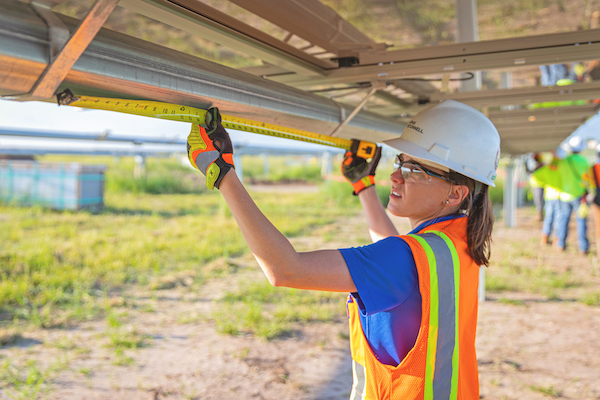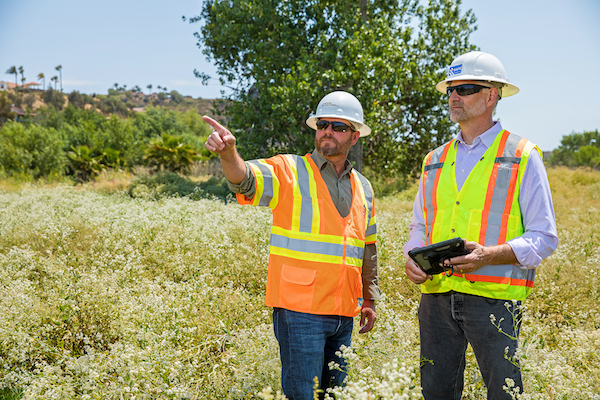Illinois Moves to Rein in County Restrictions on Renewable Energy Developments
Communities and states continue to set targets to decarbonize their economies and transition to clean power. In Illinois, for example, the declared goal is to rely on 100 percent clean energy by 2045. Getting to a sustainable energy future might not rely exclusively on renewable energy sources, but it is next to impossible to imagine a path without them.
Too often, however, communities and county governments can be averse to renewable energy developments in their own backyards. This has led to sometimes-extreme local restrictions on developments that effectively choke off projects before they can start. The constraints are such that they leave no remaining footprint in which to site projects.
Illinois legislators are fighting back, arguing that renewable developments are essential to meeting long-term energy portfolio goals as set out in the state’s Climate and Equitable Jobs Act. Early in 2023, the General Assembly passed HB4412, legislation designed to protect Illinois-based clean energy projects from the growing number of implicit, or outright local bans. Gov. J.B. Pritzker signed it into law in late January 2023. It could become a template for other states in pursuit of clean energy goals.

Drawing clear and consistent lines
The law prevents counties from enacting preemptive local ordinances that hinder the state’s efforts to decarbonize. It does so by establishing statewide standards for offsets and restrictions around utility-scale clean energy installations.
Some counties already had zoning ordinances in place, while others did not have any ordinances or standards. Under the new permitting law, each county still can set standards, but they cannot be stricter than the state mandates. Counties with tighter restrictions were also given 120 days to retract or reduce them to state-approved levels.
Why were these preemptive restrictions being enacted? Much of the pushback has come from the agricultural sector, objecting to taking or reducing land from production. Other community members, who did not want development on their own property, may have objected to development on neighboring properties.
Everyone Loves a Big Screen
When it’s not required by a county, one low-cost add-on for developers that has been successful in improving public perception has been to offer to plant a vegetated screen—trees and/or shrubs, most often evergreens—along roadways. This screen acts as a natural barrier between participating and nonparticipating properties when building a solar installation. Additionally, offering to plant pollinator habitat along the boundary of the property has ecological, aesthetic, and public relations benefits for both the developer and the community.
Past efforts to constrain renewable energy projects have included requiring prohibitive setbacks from roads or boundaries, charging unreasonable fees, or declaring outright moratoriums.
In response, the Illinois legislation:
- Mandates that county standards “may include all of the requirements specified … but may not include requirements for commercial wind energy facilities or commercial solar energy facilities that are more restrictive than specified.”
- Disallows setback distances from the boundary lines of participating properties for commercial clean energy facilities.
- Defines setback distance standards, such as:
- 150 feet from the nearest point on the outside wall of an occupied community building or dwelling on a nonparticipating property to the solar facility.
- 50 feet from the property line of nonparticipating properties.
As a practical matter, these measures will loosen restrictions in some locations, while potentially introducing restrictions in others. Whereas counties previously had wide latitude in setting standards that had to be approved by the zoning board, the legislature found compelling reasons to establish guardrails through HB4412. Hopefully, this turn of events will establish a net benefit for renewable energy developers by clarifying their path to production.
In response to this law, developers have recently seen some counties quickly establishing new ordinances, imposing fees and requirements outside of their parameters that appear to be unreasonable. The language in the law does not define what “unreasonable” fees are, nor does it establish all permit requirements, allowing a degree of that flexibility to remain with local jurisdictions.
Ironically, the law is an instance of using governmental intervention (by overriding county standards) to prevent governmental intervention (through preemptive restrictions). It does not eliminate local participation in siting processes, which will still involve public hearings and permitting, but attempts to provide a level playing field for developers throughout the state.

A model for encouraging investment
With so many states counting on added renewable generation to help them meet their carbon reduction targets, restrictive local policies and development bans pose significant challenges. The Illinois model offers a promising solution that balances environmental and community concerns with the benefits of renewable energy projects by setting standards for all.
Establishing clear, statewide standards should help attract the investment needed to achieve these states’ clean energy goals. Developers and their design partners will be able to input the consistent state standards into their siting models, helping streamline the planning process.
As the urgency of reducing carbon emissions intensifies, states from coast to coast can look to the Midwest for an example of a proactive approach that retains local involvement while mitigating tactics used to obstruct development projects.
 Allison Chapin is a project manager at Burns & McDonnell. She has over 15 years of experience working on renewable projects. including solar, wind, and battery storage projects. She has assisted clients with implementing the U.S. Fish & Wildlife Service’s Land-Based Wind Energy Guidelines, completing and managing desktop reviews — including Critical Issues Analysis Reports; pre-construction avian, bat, wetlands and cultural surveys; route analysis to avoid sensitive habitat; and zoning, stormwater, and wetland permitting — as well as compliance monitoring throughout construction, post-construction surveys, and restoration monitoring.
Allison Chapin is a project manager at Burns & McDonnell. She has over 15 years of experience working on renewable projects. including solar, wind, and battery storage projects. She has assisted clients with implementing the U.S. Fish & Wildlife Service’s Land-Based Wind Energy Guidelines, completing and managing desktop reviews — including Critical Issues Analysis Reports; pre-construction avian, bat, wetlands and cultural surveys; route analysis to avoid sensitive habitat; and zoning, stormwater, and wetland permitting — as well as compliance monitoring throughout construction, post-construction surveys, and restoration monitoring.
Burns & McDonnell | www.burnsmcd.com
Author: Allison Chapin
Volume: 2023 September/October











.png?r=7890)
